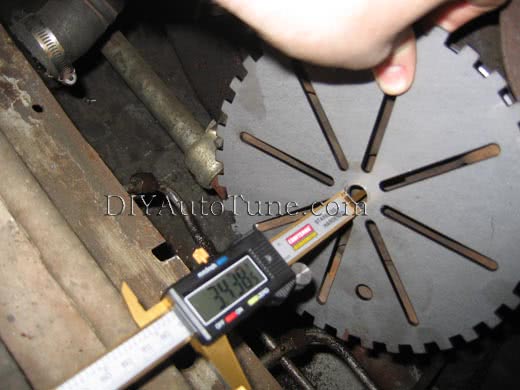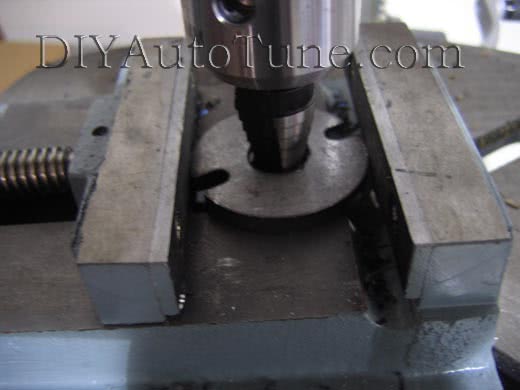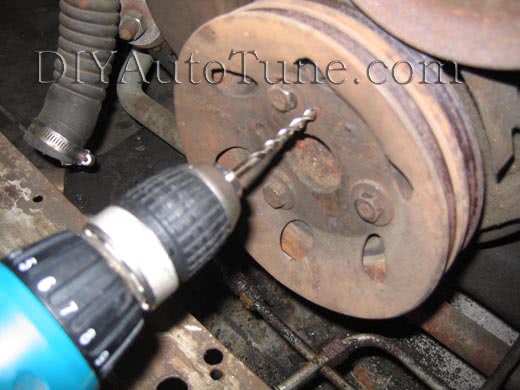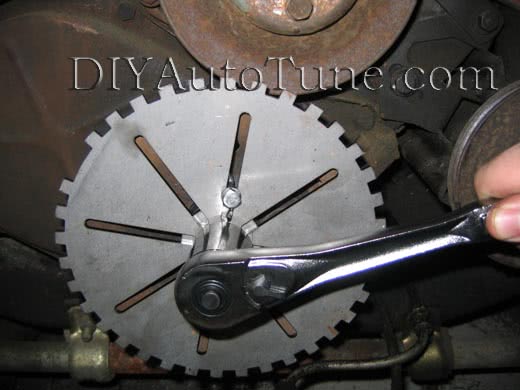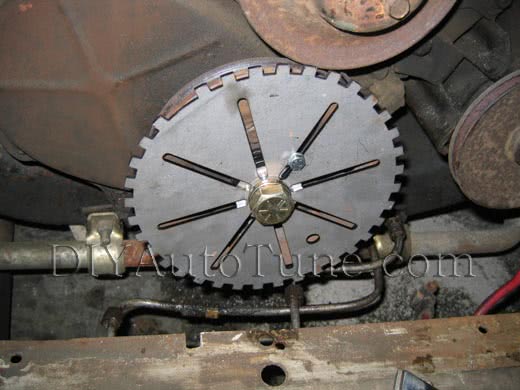This article covers how to install the DIYAutoTune.com trigger wheels. You can use a variety of sensors with these; we’ve tested them with both Ford and GM VR sensor pickups. We recommend mounting the trigger wheel in the same orientation that Ford used on their EDIS installations when using these trigger wheels on a 4, 6, or 8 cylinder engine, so you can use the same trigger wheel with either direct coil control or EDIS. You will need to install the trigger wheel so the missing tooth is a specific number of degrees ahead of the VR sensor when the engine is at top dead center in order to use the settings in our articles. Most engines rotate clockwise when viewed from the front of the crankshaft pulley, although there are few exceptions such as marine engines and most Hondas. Here’s how many teeth the gap should be ahead of the VR sensor.
Number of Cylinders Missing Tooth Location at TDC
1 9 teeth ahead of the sensor
2 9 teeth ahead of the sensor
4 9 teeth ahead of the sensor
6 6 teeth ahead of the sensor
8 5 teeth ahead of the sensor
12 8 teeth ahead of the sensor
We designed the pulleys with several features to make them easier to mount. The smaller two trigger wheels have a 1/2″ center hole and eight radial slots 1/4″ wide for adding locating bolts, while the 8 1/4″ wheel has a 1/2″ center hole and six 3/8″ slots. You can also order the wheels without slots if you prefer. The off-center hole is for balancing the wheel and is not meant to be a bolt hole. The spacers are notched to allow using the locating bolts closer to the center of the wheel.
In this article, we’ll demonstrate how to install these trigger wheels using a 1966 Dodge Dart with a slant six. The grille, radiator, and intercooler have been removed, giving easy access to the crankshaft pulley to let us take better pictures; you probably won’t need to do this on your car. Here’s what the original crank pulley looks like, covered with 40 years’ worth of rust and grime. The trigger wheels in this article were not painted yet, but they can and should be painted or powder coated for protection from the elements. They’ll get a final coat of paint once we make a bracket and put it all together.
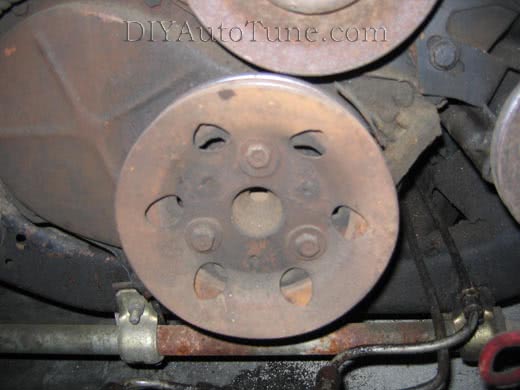
First, you will need to take a few measurements. Measure the diameter of your crank pulley. You’ll also need to measure your crank bolt, and the length of the new bolt you will need, as well as how long a spacer it will take and how much room there is The slant six has a somewhat unusual crank pulley in that it doesn’t have a bolt in the center to hold the crank pulley in place; instead, the pulley is pressed on. However, it does have a threaded hole in the center of the crankshaft that can be used to add a crank bolt. On this engine, we found that it needed a 8.25″ crank trigger wheel so the teeth would extend past the edge of the pulley, and there was just enough room for a 2″ spacer inside the circle of three bolts.
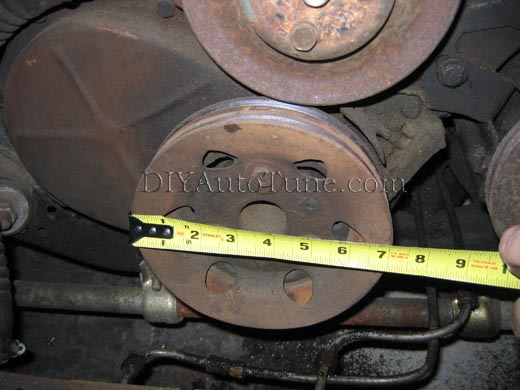
Here’s the list of parts used in this installation.
- One TW36-1_825 8.25″ trigger wheel
- Four TW-SP_2 2″ trigger wheel spacers
- One 3/4″-16 NF x 3″ bolt
- One 3/4″ lock washer
- One 1/4″-NC x 1 1/2″ bolt
- One 1/4″ lock washer
You’ll want to align the engine with the #1 cylinder at top dead center before putting the trigger wheel in its final location.
Since we’re using a 3/4″ crank bolt and the trigger wheels had a 1/2″ center hole, we drilled the center hole out to 3/4″ on a drill press.
Although they’re larger than the 1/4″ slots and would have required a little drilling on the locating slots, we could have used longer bolts in the existing pulley for locating bolts. However, not all engines will have bolts that can be used for these purposes, so we opted to demonstrate drilling and tapping the pulley for an extra 1/4″ locating bolt. If balance is critical, your best bet is to use two such locating bolts 180 degrees apart.
Stack the lock washer, trigger wheel, and spacers on the new crank bolt, and thread it into the center hole. Install the locating bolt and tighten it a little before tightening down the center crank bolt. Then tighten the locating bolt to lock down the trigger wheel in place.
Now the slant six has a 36-1 wheel installed on the crank. The next step will be to fabricate a bracket to mount the crankshaft position sensor.
